|
|

|
Porsche, and the Porsche crest are registered trademarks of Dr. Ing. h.c. F. Porsche AG.
This site is not affiliated with Porsche in any way. Its only purpose is to provide an online forum for car enthusiasts. All other trademarks are property of their respective owners. |
|
|
  |
| wonkipop |
 Jan 7 2023, 04:33 PM Jan 7 2023, 04:33 PM
Post
#41
|
|
Advanced Member     Group: Members Posts: 4,666 Joined: 6-May 20 From: north antarctica Member No.: 24,231 Region Association: NineFourteenerVille 
|
@JeffBowlsby
i had a look at the car on BAT you are referring to. white car? latest on list? not sure that is a german delivery car. its got a VIN sticker. looks original. i guess it could be a repro. but if it was german would not have one. its also got a correct Vin plate on windscreen. does look a bit shiny though. german car would not have one. and its got USA tyre pressure sticker on fuel tank where USA cars have it. german car would have it on the right inner wheel well in front trunk. i don't know enough about early cars. are you saying the fuel octane sticker is the wrong one. explanation for fuel octane sticker could be that its a repro. someone got it wrong doing a fix up/"resto"? or are you seeing other clues its german delivery besides the fuel octane sticker. its all pretty interesting. so many ways you can get an "authentic" resto wrong when you really start sticking your head into it. disappear down the rabbit hole. (IMG:style_emoticons/default/biggrin.gif) (IMG:style_emoticons/default/biggrin.gif) (IMG:style_emoticons/default/biggrin.gif) EDIT @JeffBowlsby thanks to your prompt i looked closer at PET again on side windows. see on previous page where i posted the page from my PET catalogue on file. there are two types of side windows (for both the wind up section and the fixed triangle). only two. one is clear. one is heat protection glass. so is the distinction in the side windows then. DELODUR 1 and DELODUR F. i have not seen a DELODUR F. but if that is the other side window, then what it says to me is one or the other is heat protection. not sure which one but. FURTHER EDIT and its different again for the rear window. its two types. clear is one. but the other is not heat protection its the heated rear window. i have a DELODUR 1 on my rear window and its not a heated rear window. so there is the clue i think. DELODUR 1 is likely to be the clear glass? DELODUR F is heat protection glass? can you post a pic of a DELODUR F side window mr. b and if that logic is right. the F on a front screen possibly means the same or similar thing. but not so much tinted as heat protection. probably at that 70% threshold that i think is the regulation at that time for light transmission in a windscreen. as to exactly how that heat protection was done would need a bit of further digging. F/F on my front screen and DELODUR F on a side window tends to indicate its the glass itself. as the side windows are not laminated. you would think they would do it with the interlayer in the front screen but maybe they did not back then. its possibly the glass itself? i 50% agree with you now. F would likely mean something to do with being not fully clear? but i would not use the word tint necessarily to describe it. |
| wonkipop |
 Jan 7 2023, 05:41 PM Jan 7 2023, 05:41 PM
Post
#42
|
|
Advanced Member     Group: Members Posts: 4,666 Joined: 6-May 20 From: north antarctica Member No.: 24,231 Region Association: NineFourteenerVille 
|
to explain a little further about the front screen.
usually they use the / to describe the interlayer. in modern screens you often see a lot of different versions of this. like two. // and other variations on the theme. it is usually these days floating just above the circle with the E in it on euro markings. hence i think with a 914 front screen which goes F/F that likely means the interlayer was nothing fancy and F each side of it is indicating that the glass is the special thing. two sheets of F either side of standard interlayer. we have to think back that its 50 years ago. so interlayer tech would have been far less developed than it is these days. these days they do a lot of fancy stuff with the glass interlayer itself. clear zones for toll reader trigger units etc. heads up display areas. you name it. but back then it would have been way less fancy. |
| wonkipop |
 Jan 7 2023, 06:49 PM Jan 7 2023, 06:49 PM
Post
#43
|
|
Advanced Member     Group: Members Posts: 4,666 Joined: 6-May 20 From: north antarctica Member No.: 24,231 Region Association: NineFourteenerVille 
|
@JeffBowlsby
getting a bit closer on the DELODUR name on side and rear glass. did a bit of looking about on samba. VW kooks take their research right back into the 50s. so DELODUR is either a company or a brand name that comes from the merger of Duro-Glas and Delog. the blended title for the merged company is DELODUR. the LIZ. SEKURIT bit on the side glass means this. LIZ. is abbreviation for licensed in german. so that means either Licensed to SEKURIT or licensed from SEKURIT. old VW glass prior to merger of Duro-Glas. still LIZ. SEKURIT even back then. 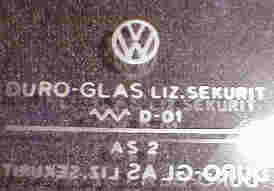 ----- is this the side glass you are talking about. it is DELODUR-1F. so its got an F after the 1. interesting it also has the Audi Rings as well as the VW symbol. similar to the 76 windscreen in the first post that started all this off. 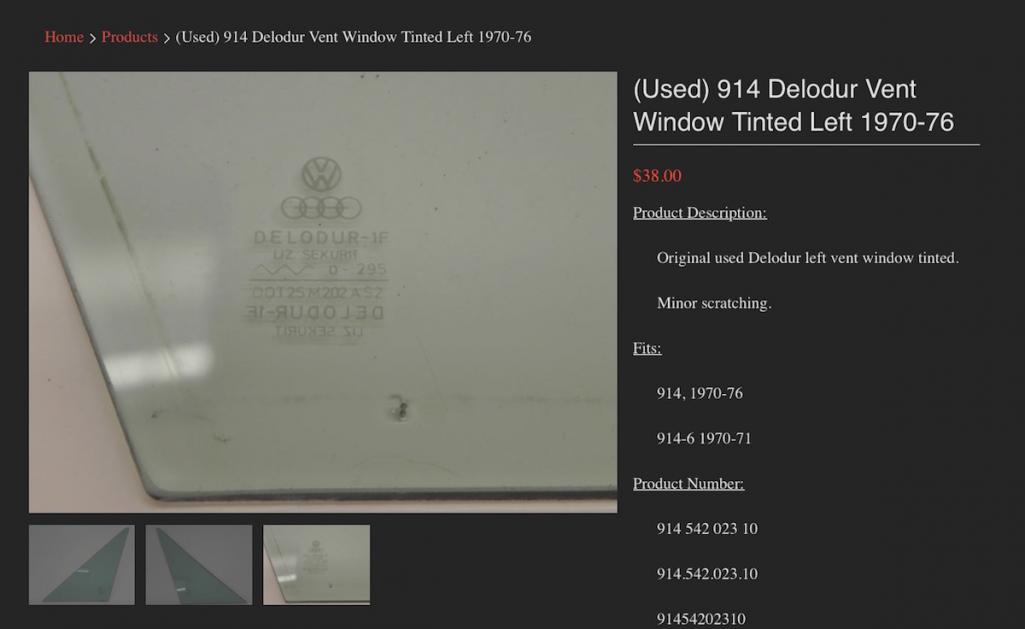 there is quite a few things to track on the glass. seems to me not only is there the spec for the different windscreens. but it could well be that for each year the way the information is written and the way it is arranged graphically on the mark changes. or it might be for each year or change at distinct points in time. they might have been describing exactly the same screen and spec, but its written differently in 1970 than how it is written in 74. or any other year! (IMG:style_emoticons/default/confused24.gif) (IMG:style_emoticons/default/biggrin.gif) (IMG:style_emoticons/default/beerchug.gif) |
| vitamin914 |
 Jan 7 2023, 07:12 PM Jan 7 2023, 07:12 PM
Post
#44
|
|
Member   Group: Members Posts: 202 Joined: 8-September 21 From: Toronto Canada Member No.: 25,893 Region Association: Canada 
|
@wonkipop
@JeffBowlsby There is a historical meaning to various terms like toughened, tempered, float and plate. I would say 99.99% of all windshield glass now made is from laminated sheets of annealed float glass. None of it is tempered or toughened. It may have at some point in history but the reason is rather obvious. Have you ever seen how tempered glass shatters into what looks like ice crystals? Imagine a stone hitting the windshield and instantly the glass turns into that? You suddenly wouldn't see anything in front of you. The terms plate glass and float glass were used to describe the process of making glass... plate glass was typically drawn vertically out of a molten pool of glass. It would have a wavy pattern and it was ground and polished to make it flat. Float glass is made by molten glass flowing out onto molten tin ribbon and "floating" on it until it cooled. This was obviously a better glass. I can see there being differences in mechanical properties between float and plate glass and that may be the difference in some trademarks having float or plate designations. I don't know when thing like that happened in what years. Now the terms are interchangeable. Trivia... what does PPG stand for? Many think it is Pittsburgh Paint and Glass - wrong. It actually was Pittsburgh Plate Glass. They were the first company to successfully operate a commercial plate glass process. Annealed, tempered, toughened. Windshields are made from annealed glass. Two pieces of glass are cut with the inner piece being a bit smaller so when they bend, the edges line up to be square. The flat glass is dusted with a material so the two pieces do not stick together when being bent. The flat glass is placed on "bending irons" which are typically made of stainless steel with pivoting weighted wings. The bending irons support the glass around the periphery and as the glass travels through the lehr (bending furnace) it softens, sags and bends into shape by gravity. It takes a lot of skill with the right heating profiles to get the glass into the right shape. After slow cooling the layers are separated and the PVB vinyl gets inserted then heated with a vacuum or nipper rollers to squeeze out air. The final process it is put into a huge autoclave to be heated and pressurized. That squeezes the glass to the vinyl gets the air out and it goes from milky to clear. Tempered glass is similar but different. Glass is cut, machined for size and to give a rounded edge and if needed, drill holes for hardware. The glass goes through a furnace on ceramic rollers to a bending station where it gets picked up (with a vacuum) and dropped onto a bending form. Then it is immediately basted with compressed air from oscillating nozzles that cool the glass rapidly tempering it. This induces huge stresses. The outsides are in compression the core is in tension. It gives the glass lots of physical strength but that is not where the safety part comes from. If the compressive layer is comprised (by an impact) the stress becomes unbalanced at the the entire piece shatters into tiny fragments. None of these fragments are large enough to make a knifelike shard that will cut you deeply. This is the safety part. Strong (I have stood on a curved side window without it breaking) cheap and safe. Sometimes you can see the nozzle stress patterns in tempered back windows of cars if you are wearing polarized sunglasses. Most tempered glass is now made horizontally on rollers. Earlier tempered glass went through the furnace hung vertically from tongs. The glass was then pressed from the sides before being tempered. It has very characteristic tong marks or dimples pushed into the glass surface near one edge. I think I saw these on the side glass of our 914s? Tempered glass has specifications for how it breaks. There is a maximum weight for the largest shattered piece. Euro standards have smaller size fragments and are harder to make. I remember when when we had to make a Euro spec window for a customer and the process could not cool the glass fast enough in the summer (hot ambient air). The plant manager went baillistic saying what am I supposed to tell the customer that we can't make their glass in the summer? Well... yeah... it's physics. Thinner glass is harder to properly temper than thicker glass too. Toughened glass is tempered glass but not to the same level. The shards will be bigger. One of my jobs as a young engineer was to test glass samples in the lab by dropping metal darts and huge ball bearings from various heights onto the glass. We would log the test results and have to send additional samples out to Underwriters Labs or Canadian Standards Association for independent certification. I just did the testing not the submissions. This is where the M numbers were used. The M number would be the certification for that particular type of glass, thickness, lamination / temper etc. It is very possible that the M number had to go to the DOT for registration - but I don't know that for a fact. We also did light transmission and abrasion testing on the glass too. All of this was recorded for each M number. Although there is a lot of science in making glass, there is also a lot art in the process too. It takes a lot more for everything to come together than we sometimes imagine. You guys have done some amazing research on the trademarks or "bugs" as some call them. Bravo! Don't get too hung up on the way things are presented in the trademarks. There were no hard and fast rules. It had to meet regulations for minimum information but beyond that it was up to the glass company how they presented it. Sometimes the auto maker wanted specific things (like logos or bar codes) but they left the rest to us. We had a standardized trademark catalog but often had to make minor changes. Obviously, aftermarket replacement glass was much less strict than OEM (that required the car maker to approve). |
| wonkipop |
 Jan 7 2023, 07:37 PM Jan 7 2023, 07:37 PM
Post
#45
|
|
Advanced Member     Group: Members Posts: 4,666 Joined: 6-May 20 From: north antarctica Member No.: 24,231 Region Association: NineFourteenerVille 
|
thanks for that @vitamin914
your remarks regarding windscreens and lamination make 100% sense to me. the whole idea of a modern safety windscreen is that it is not meant to explode. which toughened glass tends to do spectacularly. i've watched a very expensive triple glazed sliding door glazing unit explode after one of the guys installing accidentally tapped the edge with his tool belt hung hammer. everyone standing with 10 feet had a heart attack. and then the glazier had heart attacks for the rest of the afternoon thinking about the replacement. (IMG:style_emoticons/default/biggrin.gif) (IMG:style_emoticons/default/biggrin.gif) (IMG:style_emoticons/default/biggrin.gif) i would have thought the windscreens are all laminated. but not laminations of toughened. here is some more for @JeffBowlsby . i found these from the ECA/B file fairly easily when i went back and scoured. from a 1974 1.8 that was very original. in 1974 they were doing the side glass as DELODUR - F. pretty interesting to compare to that one that AASE advertises with 1F rather than F. which is probably a 1976 one given the audi rings. but who knows. anyway a straight up DELODUR-F. interestingly the D number is different on the F in 74 than the 76(?) one. 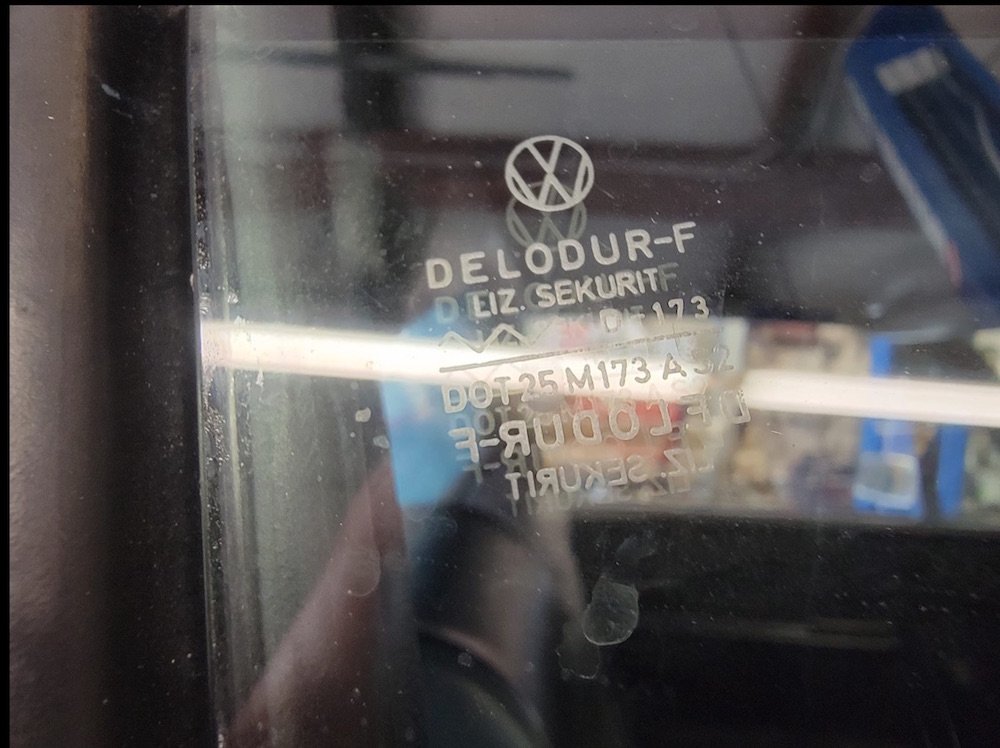 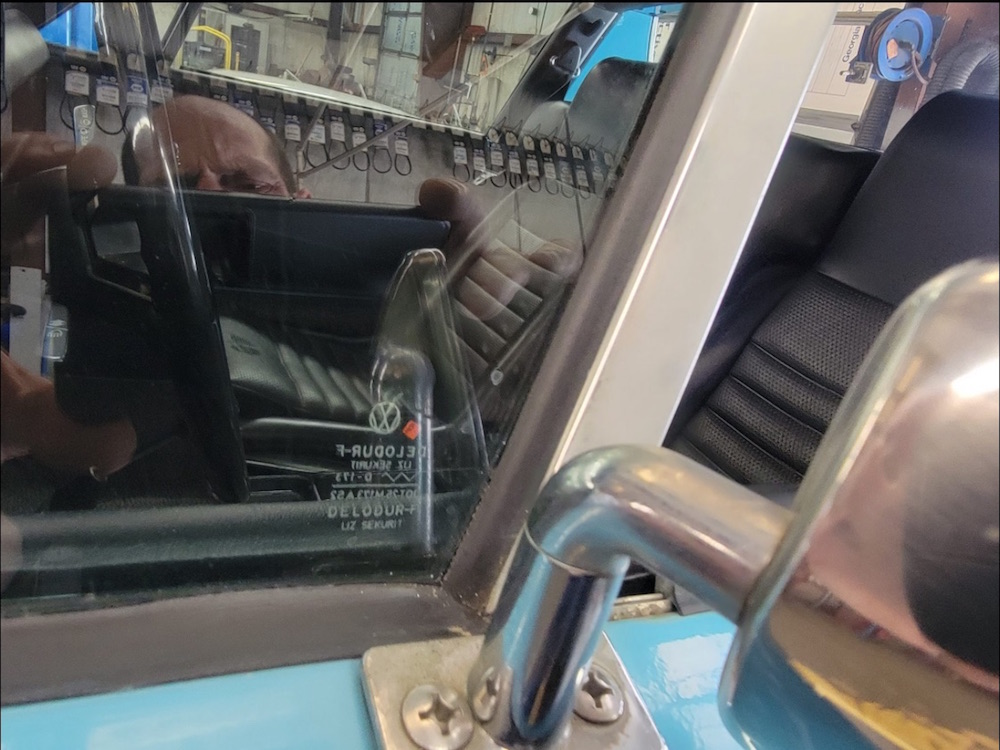 got to digest the rest of @Vitamin914 's download for all his good info. (IMG:style_emoticons/default/beerchug.gif) |
| wonkipop |
 Jan 7 2023, 07:52 PM Jan 7 2023, 07:52 PM
Post
#46
|
|
Advanced Member     Group: Members Posts: 4,666 Joined: 6-May 20 From: north antarctica Member No.: 24,231 Region Association: NineFourteenerVille 
|
@vitamin914
that is just brilliant about the sunglasses and tempered glass. for years i have wondered what those patterns were that i saw in the back glass and side windows of the 914. i was wondering, is this some kind of horrible degradation going on and one day i will wake up to exploded glass everywhere in the garage. (IMG:style_emoticons/default/biggrin.gif) (IMG:style_emoticons/default/biggrin.gif) but its not in the windscreen. interestingly my renault clio from 2002 does not seem to exhibit those patterns in the glass with the sunnies on. but the citroen xm from 99 does. the glass in the renault is quite a bit more tinted and its factory tint. recently australia really relaxed on glass tinting standards for cars. it has been in response to the alarming skin cancer rates and over the top UV levels in the southern hemisphere. we have greater ozone depletion down here than the northern hemisphere. even our windscreens are allowed to be notably darker than they once were. i used to know a red headed girl with fair skin back in the 90s. she always used to drive with long sleeves and gloves on and with giant jackie onassis sunglasses. she was a doctor. had a fear of skin cancer. |
| wonkipop |
 Jan 7 2023, 08:30 PM Jan 7 2023, 08:30 PM
Post
#47
|
|
Advanced Member     Group: Members Posts: 4,666 Joined: 6-May 20 From: north antarctica Member No.: 24,231 Region Association: NineFourteenerVille 
|
@JeffBowlsby
@vitamin914 given vitamin's big explanation and thinking about it. i reckon whether its toughened (tempered) or laminated float (plate) is taken up in the trade (brand) name of the glass. in the front screens that being KRISTALL. referring to a copyright name for a particular way of laminating the glass with particular interlayer and certain specific process and machines. made by KINONGLAS. and in the side windows and rear windows. DELODUR - meaning toughened or tempered and a registered copyright name for a particular process for doing it in a particular factory. made by SEKURIT. and yes i think you are right Jeff. the F refers to what you might call tint. or more correctly heat protection. except i think it amounts to a naturally darker glass by composition rather than tinting as we normally think of it. if there is no F its not heat protected. ie the 1 designation on side glass. this naturally darker glass is used on side windows but is toughened and tempered using the particular manufacturer and copyrighted process. and same goes for windscreens except lamination process. that would be my guess. beyond that you are going to need books with M codes and/or the german tables for D codes. way beyond my pay grade or i suspect standard internet searches. if you could accumulate enough examples i am sure it does come down to the 4 different screens in the PET. its just that the description might slightly change through the years. there appears to be basically an F/F front screen. and then there appears to be variations on IRA/S front screens. earlier ones appear to say IRA/S later ones say FIRA/F but maybe not same. because there is that pesky F again. but they seem to be later screens that have FIRA/F v earlier screens saying IRA/S. i reckon its more or less the same thing. it appears to be the alternative screen to more common F/F. the other variants say either F/F or nothing. all the ones i have found appear to have the HI tacked on the end whatever the IRA/S FIRA/F or F/F. so i don't think HI has anything to do with heat protection glass. what HI means - i dunno. high impact? or something like that? |
| wonkipop |
 Jan 7 2023, 08:58 PM Jan 7 2023, 08:58 PM
Post
#48
|
|
Advanced Member     Group: Members Posts: 4,666 Joined: 6-May 20 From: north antarctica Member No.: 24,231 Region Association: NineFourteenerVille 
|
@JeffBowlsby
ok i just went back into PET on windscreens. so there are 3 there that are clear. one of them is indicated as being for 914/6 and for 2.0 one of them is indicated for being for 914/4, 1.7 and 1.8. both have same part numbers. and why the difference. i mean there is none is there. there is a third clear one. this has again the same part # and specifically says not for USA, CND and S. (canada and sweden) and it says it is tempered plate glass. so there was one tempered or toughened windscreen. surprising to me. but in looking closely not so surprised. PET describes other three as laminated. but makes no mention of laminated for this one. i don't think its laminated. its one single sheet of glass. if it is then i can understand how its been made. its been formed and then its been tempered. thats the only way you can do it. what it is saying Jeff is that tempered screens are not for the USA. definitely not a USA standard. so i will bet a 1000$ that that screen whatever it is does not have AS1 written on it? and then the fourth one is the heat protection glass. and its the one with the different part no. it is described additionally as laminated. so there will be three with laminated written on the screen. the toughened or tempered one will probably not say laminated anywhere on it. the spare one i have in the box is the commonly shared part number that three of them have. 914 541 101 10. lucky i have it still in its box because i can at least link a screen to a part #. its on the box. no other way to do it as no part # on screen itself. going to be interesting when i get the screen out and see whats on it. but not going to rush into that. i need a friend around here to help me get it out carefully. whatever it is though part # says its clear (and one of the versions of the clear). i've got my fingers crossed its not a f$%ken tempered one. last thing i want as a spare. (IMG:style_emoticons/default/sad.gif) (IMG:style_emoticons/default/blink.gif) i don't think it will be as i am pretty sure its got to be lam glass for australia, and i don't believe the aus distributor would have been that stupid. they used to know what they were doing. but you never know. i'm really going to have to have a look at it now. 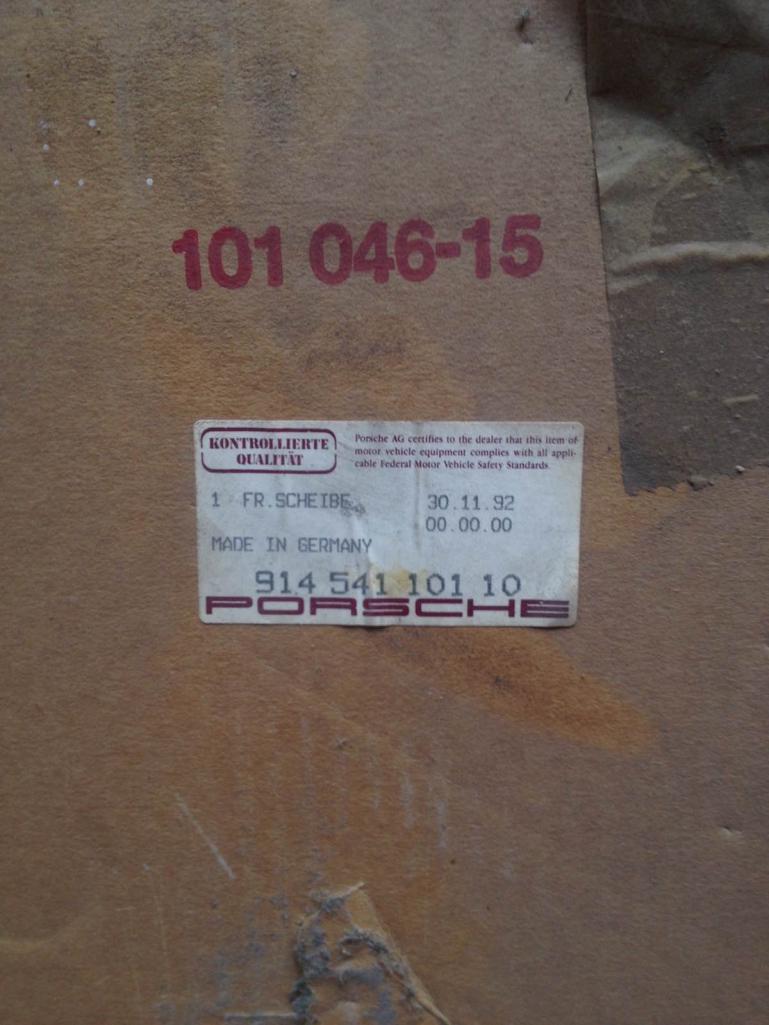 |
| wonkipop |
 Jan 7 2023, 09:43 PM Jan 7 2023, 09:43 PM
Post
#49
|
|
Advanced Member     Group: Members Posts: 4,666 Joined: 6-May 20 From: north antarctica Member No.: 24,231 Region Association: NineFourteenerVille 
|
@JeffBowlsby
it just hit me why the difference of screens for /6 and /2.0 versus the 1.7/1.8 higher top speed. its an impact strength thing? i think what we will probably find is that the 6 and the 2.0 has a different screen than the humble 4s. you need to find a few 6s or 2.0s known to have original screens and see what is notated on them. this is for the clear screens. i notice that for the heat protection screen with the different part number that is in column to the far right of PET there is no distinction or listing of models. that screen must be impact/speed rated for use in all the cars. its a stronger screen up to the standard needed for a 6 but they only bother to make one variant? probably the most expensive screen too? they did the same thing for the tyres. 1.7s and 1.8s had the S rated tyre. 2.0s had the H rated tyre (think its H isn't it or was it V? whatever its not S). there is a speed threshold standard somewhere in there. german standard? the faster cars get a stronger standard clear screen than the slower small engine standard cars? and somewhere in the mix they could do a toughened screen but its only permitted in the smaller 4 in certain parts of the world and was never used in the 6 or 2.0 anywhere in any part of the world. thats how i read the PET. EDIT - and i am starting to remember when i got my screen. my mate with the original assessment 6 did the deal through the distributor and got me in on it. so with a bit of luck what i have is a screen fit for a 6 because they were two screens bought in together and the order was made with the 6 in mind. i think they would have got it right. anyway more reason to get it out of the box. |
| wonkipop |
 Jan 7 2023, 11:01 PM Jan 7 2023, 11:01 PM
Post
#50
|
|
Advanced Member     Group: Members Posts: 4,666 Joined: 6-May 20 From: north antarctica Member No.: 24,231 Region Association: NineFourteenerVille 
|
@JeffBowlsby
one more for you. i was trying to think where would a car be that did not have the USA approved windscreen. i thought of the silver 74 1.8 in the porsche museum. its a german delivery car. the one we got one of the elusive engine tin stamp numbers from. i only have my photos i took years and years ago. can't quite enhance it enough to really read it. but i can see its got way less on it than USA windscreen. if i interpolate it it looks to me like its missing the whole DOT-CODE M-CODE AS1 line. i think i can just make out the german squiggle hertz/herz symbol at bottom and it looks like it has the manufacturer description under the VW logo. i think i might go searching on the web for images others have taken off this car. might luck out and find a close enough shot to read it. this could be the toughened screen not permitted in the USA? EDIT, gave up on finding an image myself. shot an email off to the curator since i had his contact and he did respond to me once before. got an auto response - he is back to work on the 9th. see if he can access the car and give us a photo. never know. Attached thumbnail(s) 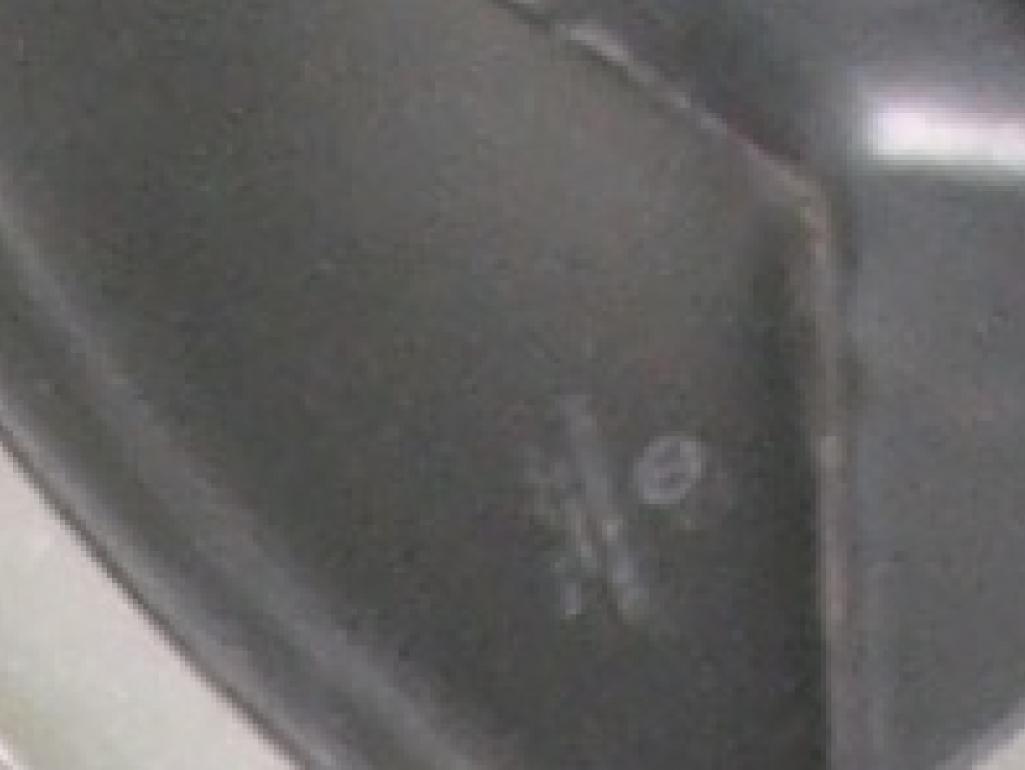
|
| wonkipop |
 Jan 8 2023, 12:44 AM Jan 8 2023, 12:44 AM
Post
#51
|
|
Advanced Member     Group: Members Posts: 4,666 Joined: 6-May 20 From: north antarctica Member No.: 24,231 Region Association: NineFourteenerVille 
|
alright @JeffBowlsby
i dug into heat protected glass this afternoon. its not tint - here is the distinction. @vitamin914 will correct me if i am way wrong. tints work by cutting down in the visible spectrum of light. this was incompatible with transparency standards at that time. 70%. the glass itself was almost at the 70% all on its own before you even thought of tinting = no tinting. often even on side glass. at least not legally back then. so they came up with heat absorbing glass. which deals with light in the infrared spectrum but does not affect visible wavelengths. so they could do heat control and still pass visibility/transparency regulation. the modern form of one of these treatments or types of glass more properly is IRR infra-red reflectance glass. it works just as the name suggests. reflects the heat spectrum and glass does not absorb it. its proper abbreviation is IRR. sound familiar? the earlier form was infra-red absorbent glass. IRA. not the irish republican army the nuns used to collect for. it didn't really work. it absorbs the infra-red before it hits the interior but it ends up heating the glass itself which then radiants into the interior. they really don't use this one any more. but it was the tech back in the day with 914s and other 70s cars. its pretty obvious which screens are the heat protected screens - they are the ones that have IRA in the description line after the makers name. so i am going to have to go back to my original position which is i don't agree with you that F means tint. there was no tint glass in 914s from factory. only heat control. i know that upsets the reasoning on the side glass, but there has to be some other meaning to the 1 or F or 1F code there. also thanks to @vitamin914 's superb breakdown on glass for idiots like me, i can now understand what is going on with early cars referring to plate and later ones referring to F or as i believe F to mean Float glass. to begin with in early cars they were making the primary sheets of glass for the build up of the windscreens from plate glass. or as it was sometimes known. sheet glass. and as vitamin points out, older process, caused ripples in glass, had to be polished and ground flat to remove distortions in the case of windscreens, or even high end architectural use. float let them produce flat sheets of glass more effeciently with either no polishing or very minimal polishing. cheaper in the long run. so i think what we see with 914 windscreens is the flip over down at the kinonglas factory where they go from using plate or sheet glass as the raw base material to float glass. and that happens around about 73 or so. maybe 74. the earlier ones are using S. the later ones have the same descriptions for glass but use F. its basically essentially the same material just made a different way. of course it would have involved a whole new raft of tests and certificates because thats how bureacracy works. and maybe it had slightly different impact performance outcomes. who knows. you would have to see those codes to pick up any subtleties. so at this stage i am saying the F/F is the clear screen. or it might be S/S or even just described as plate glass in earlier versions. but if its got IRA in it, then its the heat control glass. and that can either have F or S in it depending on whether its pre 73/74 or after. will need to find a better explanation for the side glass i think. you might be correct about it in relation to side glass and heat control but it does not mean the logic extends to the windscreen so abruptly or directly. like F is all there is to it. i could expand further. maybe they got performance out of vertical side glass that was F equal to performance out of IRA simply as a result of side glass being vertical and windscreen glass laying over on an angle and being laminated. ie this gave equal performance all round for the so called heat performing glass. given orientation of surfaces and sun assumed to be overhead. and when you used the straight up F/F windscreen it gave the same performance as the clear or 1 grade glass on the side windows. my solar orientation on architectural windows is kicking in here. back windows just got 1 grade DELOCURE because its passively shaded by the roll bar anyway. all they want there is heated glass for condensation control as a lux feature. end of research. been another roaster of a day here that denied me my 914 drive. (IMG:style_emoticons/default/sad.gif) |
| wonkipop |
 Jan 8 2023, 01:12 AM Jan 8 2023, 01:12 AM
Post
#52
|
|
Advanced Member     Group: Members Posts: 4,666 Joined: 6-May 20 From: north antarctica Member No.: 24,231 Region Association: NineFourteenerVille 
|
@JeffBowlsby
here is the example that perhaps clearly illustrates what i am talking about. this car on BAT. 1974 1.8. claimed to be low mileage original. certainly very original. the glass package is interesting. its all photographed in the detail images. its got an FIRA/F screen. its described as laminated F. its side windows are DELODUR F its order form/window sticker is marked as tinted glass option - all around. unfortunately no image of rear window. but its a pretty reliable example to go off in my humble opinion. https://bringatrailer.com/listing/1974-porsche-914-59/ my car is a 74 1.8 it has an F/F screen. described as laminated F DELODUR 1 side windows. DELODUR 1 rear window. i don't have an order form sadly. original owner never passed that on in the file. the side windows sure are clear. (why would you get tinted windows in maryland anyway? which is where it came from new). i rest my case tentatively on these two examples for now. (IMG:style_emoticons/default/beerchug.gif) FIRA/F + DELODUR F = so called "tinted glass" option. american terminology. F/F + DELODUR 1 = standard clear glass package. no "tinted glass". of course this is only good for 1974. (IMG:style_emoticons/default/biggrin.gif) i know there is another 74 "tinted window" example somewhere in ECA/B files that is a car i came across. just have to find it again. and i know it had an order form. a pretty good one actually as it was a tourist delivery USA car that was picked up from karmann factory. but would need to find it and look to see if it has glass images. and there is always the question does it still have original screen. |
| vitamin914 |
 Jan 8 2023, 02:44 PM Jan 8 2023, 02:44 PM
Post
#53
|
|
Member   Group: Members Posts: 202 Joined: 8-September 21 From: Toronto Canada Member No.: 25,893 Region Association: Canada 
|
Heat absorbing glass has been around for an awfully long time. PPG came out with Solex (now called Solexia by the new owners) back in the 1930s. Nothing really exotic about it, the glass has a greenish tinge or tint. It basically adds an impurity of iron and or chromium ions that does not transmit IR but absorbs it. I think it also has higher UV absorption too. The car still gets hot inside.
PPG had IR reflective glass (Sungate?) but I think this was a metallic coating on the inside next to the vinyl to reflect IR. They used to apply it with sputter coating ion deposition technology. From the late 80s onwards there was a big push to add technology to laminated parts. Thin film deposition gave better IR /UV performance (but would stop your radar detector from working too). Rain sensors, heated w/s, heads up display reflectors and all kinds of stuff. Most of it was gimmicky and short lived. About the only thing I sometimes see these days is a heating grid under the parked wipers for freezing rain. But I doubt these are useful in places like Los Angeles or Sydney. One of my 914's replaced w/s is made with Solex glasss so it has been around for ages and continues to be made (the other w/s is made by Sigla so not OEM either). I'm sure other companies have identical equivalents - patents have long run out. 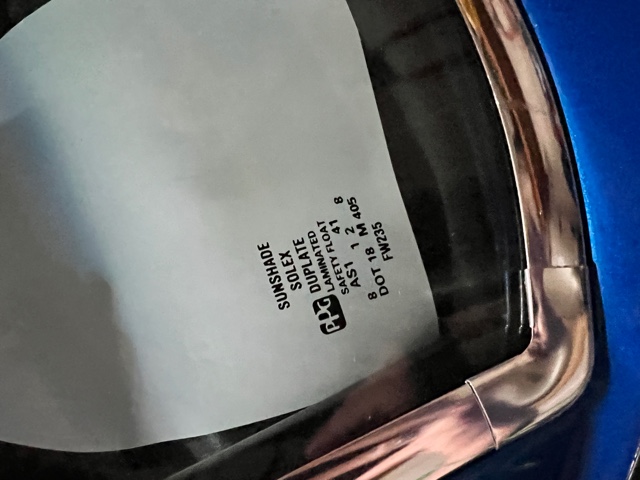 I noticed something interesting when I was in a junk yard looking at dead 914s. All the cars that had heated rear windows had clear (not the greenish heat absorbing tint) glass all around. I guess it sort of makes sense - you don't need heat protection glass if the car is in a cold climate with a heated back window... I harvested a heated back window from one of the five dead 914s. 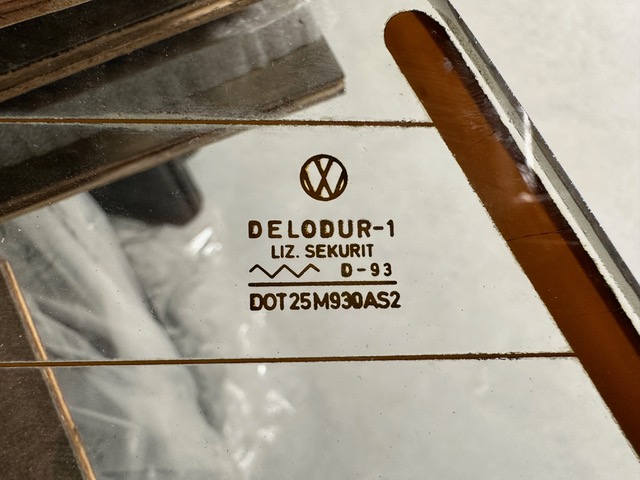 Speaking of heated back windows... Tin float glass picks up tin ions in the surface that contacts the molten tin bath. With a UV light source, you can identify the tin side. It fluoresces a whitish glow compared to the non tin side. This is important for making windows with heated circuits. If the heated circuit is printed on the tin side it will appear a dark reddish brown color from the outside of the vehicle. If printed on the non tin side it would be a lighter orange color. Most auto companies wanted it darker although there were a few Japanese makers that wanted the lighter color ...more trivia. |
| wonkipop |
 Jan 8 2023, 03:10 PM Jan 8 2023, 03:10 PM
Post
#54
|
|
Advanced Member     Group: Members Posts: 4,666 Joined: 6-May 20 From: north antarctica Member No.: 24,231 Region Association: NineFourteenerVille 
|
@JeffBowlsby
now i know what i am looking for, found these easily trawling through BAT. restricted search to 74 and above for the moment. these examples show the combo of glass you got if you ticked tinted glass all round option. 2 full examples from 74 with showroom sticker/order form - or cert of authenticity. tinted windows all round box ticked for both. both have the FIRA/F screen, DELODUR F side windows. one has an image of DELODUR 1 rear window. 1 example from 75. no cert of auth or showroom sticker. but full package of window images. as per both 74 except all glass has audi rings added to VW logo. 1 example from 1976 has showroom sticker/order form. tinted windows all round box ticked. as per 75. except side windows are DELODUR 1F. ------ example of 74 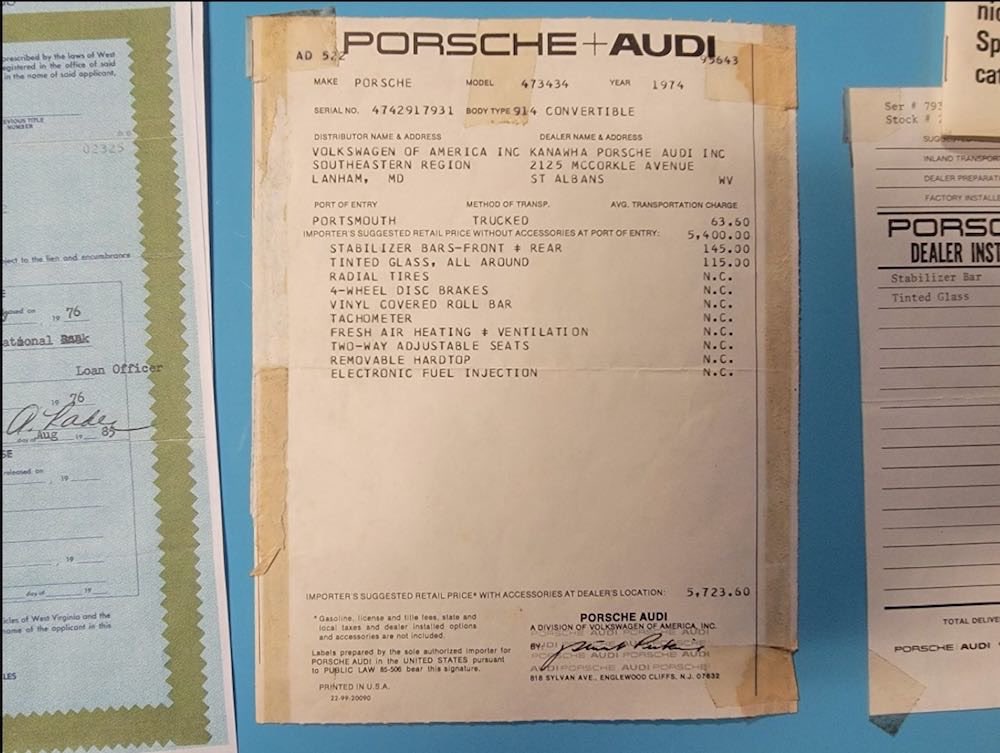 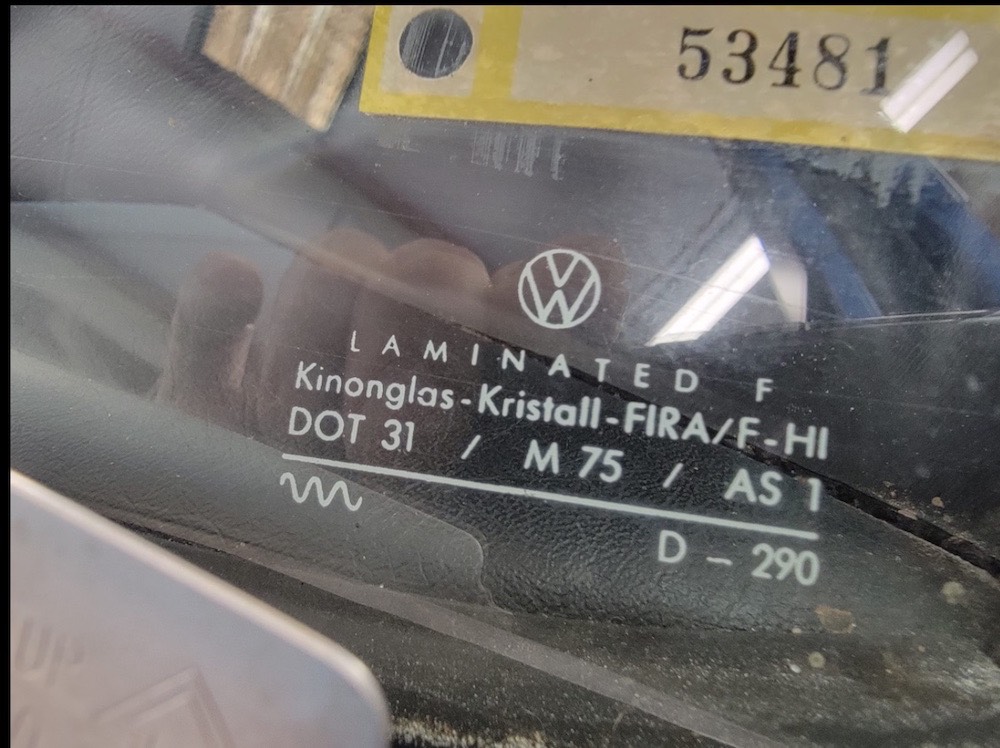 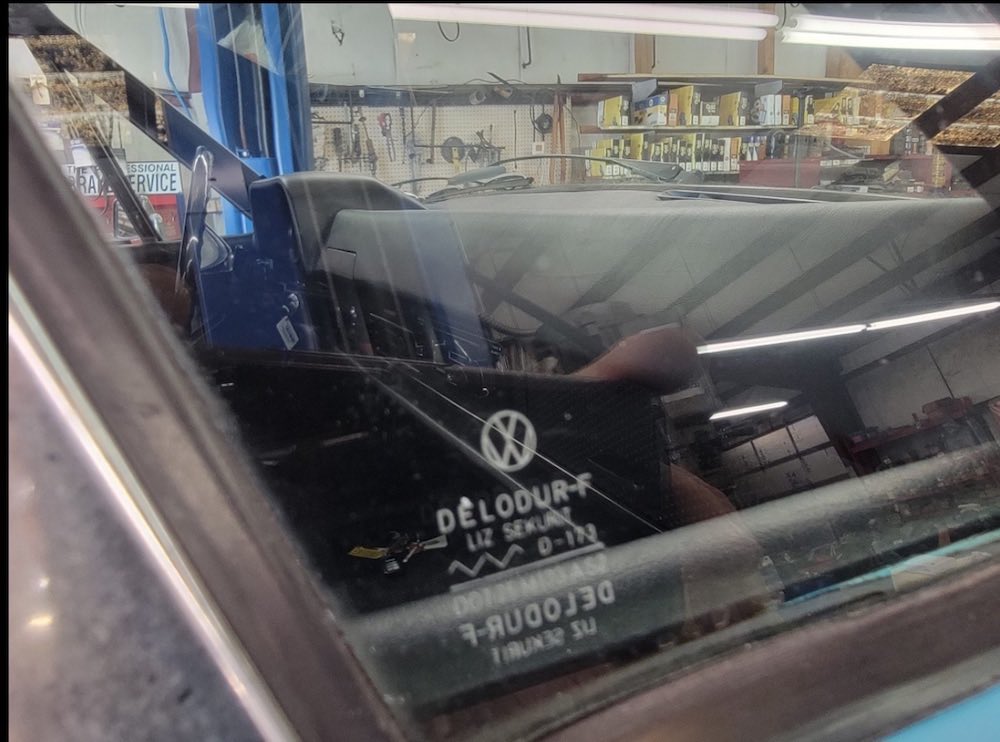 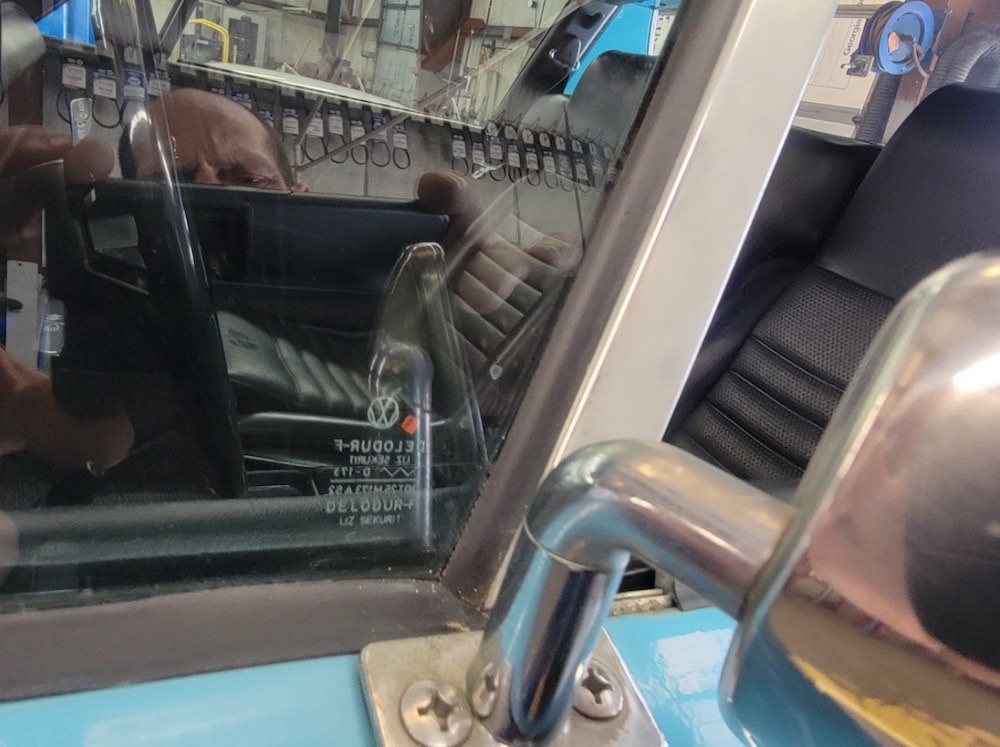 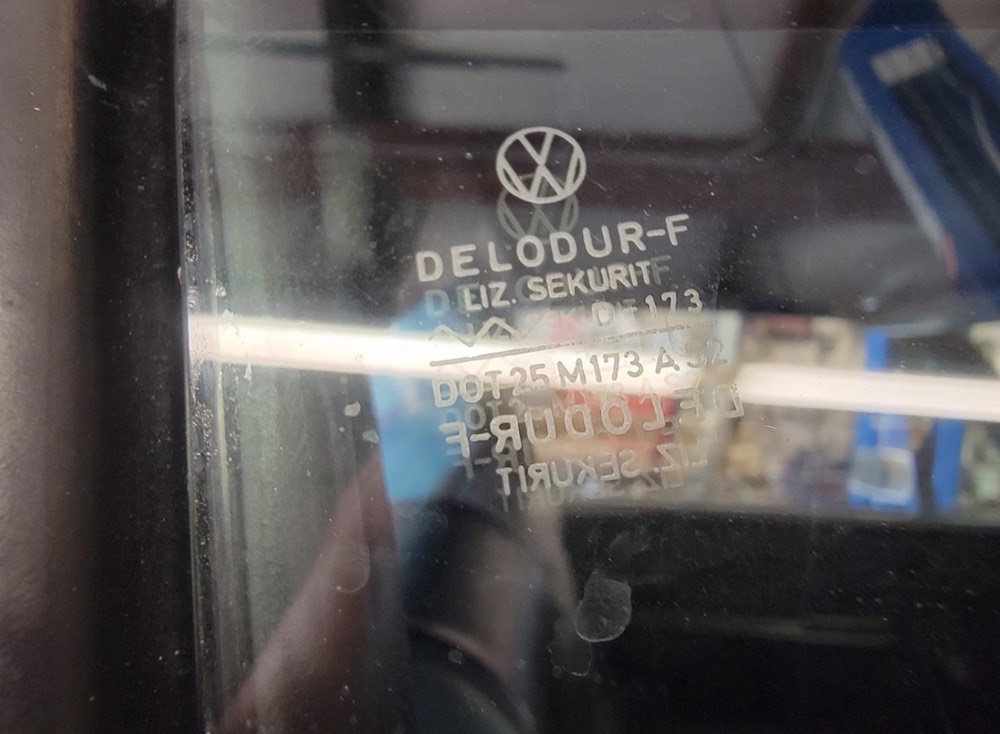 so far unsuccessful finding example like mine with an attached cert of auth/showroom order form. but have collected examples of other 74s matching mine. F/F front screen with DELODUR 1 side glass in combo. sure to pop up one eventually. not every seller bothers to shoot the glass markings on BAT. -------- found a bumblebee with a cert of authenticity that stated tinted windscreen. as distinct from other four examples which stated tinted glass all round. the example had its original windscreen replaced. but all side glass looked original and aged. all side glass was DELODUR 1. -------- i'll keep the stuff i find filed. the place for this thread or a new one that compiles the info clearly is probably better in the originality section of the website. but not just yet. we need some stuff from pre 74. its not worth putting in until its been cracked with reasonable certainty. -------- bonus find - 914/6 with a sudglas screen. looks interesting. black screen marking not white. my guess - later OEM spare part from porsche. sudglass must have run a batch but not during 914 production? black markings on screen much more like modern windscreens similar black marks, the screen has full set of standards printed on it. French , German, USA, etc its a infra-red screen. of interest the interlayer in the screen looked like it was failing at all its corners. quality control? 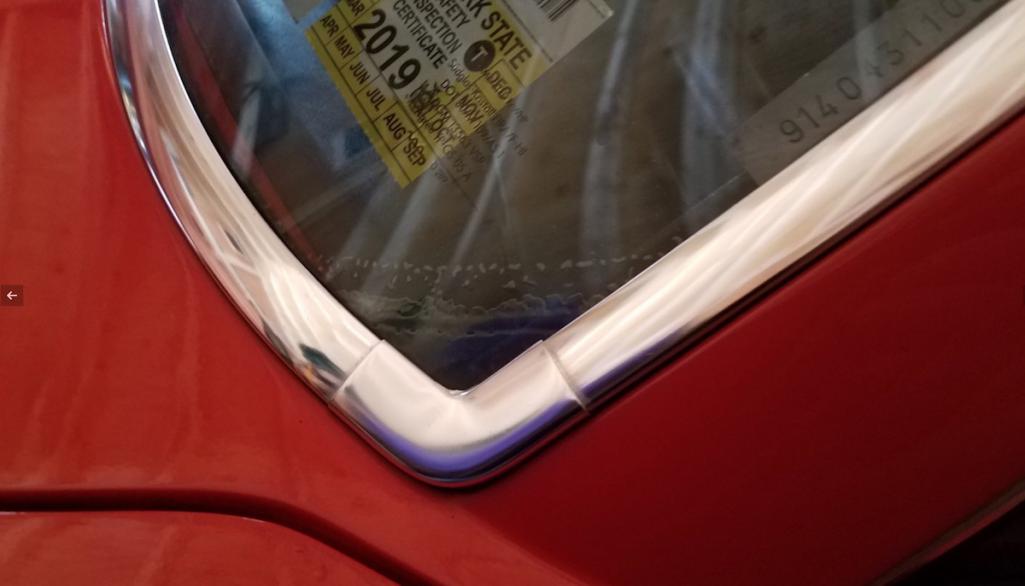 |
| wonkipop |
 Jan 8 2023, 03:19 PM Jan 8 2023, 03:19 PM
Post
#55
|
|
Advanced Member     Group: Members Posts: 4,666 Joined: 6-May 20 From: north antarctica Member No.: 24,231 Region Association: NineFourteenerVille 
|
Heat absorbing glass has been around for an awfully long time. PPG came out with Solex (now called Solexia by the new owners) back in the 1930s. Nothing really exotic about it, the glass has a greenish tinge or tint. It basically adds an impurity of iron and or chromium ions that does not transmit IR but absorbs it. I think it also has higher UV absorption too. The car still gets hot inside. excellent bit of info @vitamin914 . i'd say thats pretty much all a 914 "tinted" screen is. the DELODUR 1 on the side windows looks like its what we call low iron or ultra clear glass in construction circles. DELODUR 1 is probably toughened plate or sheet versus DELODUR F being toughened float. the glass would have come out of two different processes or production lines. the float glass they were using appears to have been naturally greener (darker) due to its composition. they just amped it up with the outer layer of the windscreen lamination for the so called tinted screen with extra ingredients in the glass mix as you say. (IMG:style_emoticons/default/beerchug.gif) i'll be interested to see if porsche museum gets back to me. the curator did last time i wrote. so long as you are very specific about what you want and it won't take too much time he wanders over with his iphone, takes a snap and emails it directly. |
| vitamin914 |
 Jan 8 2023, 07:09 PM Jan 8 2023, 07:09 PM
Post
#56
|
|
Member   Group: Members Posts: 202 Joined: 8-September 21 From: Toronto Canada Member No.: 25,893 Region Association: Canada 
|
Heat absorbing glass has been around for an awfully long time. PPG came out with Solex (now called Solexia by the new owners) back in the 1930s. Nothing really exotic about it, the glass has a greenish tinge or tint. It basically adds an impurity of iron and or chromium ions that does not transmit IR but absorbs it. I think it also has higher UV absorption too. The car still gets hot inside. excellent bit of info @vitamin914 . i'd say thats pretty much all a 914 "tinted" screen is. the DELODUR 1 on the side windows looks like its what we call low iron or ultra clear glass in construction circles. DELODUR 1 is probably toughened plate or sheet versus DELODUR F being toughened float. the glass would have come out of two different processes or production lines. the float glass they were using appears to have been naturally greener (darker) due to its composition. they just amped it up with the outer layer of the windscreen lamination for the so called tinted screen with extra ingredients in the glass mix as you say. (IMG:style_emoticons/default/beerchug.gif) i'll be interested to see if porsche museum gets back to me. the curator did last time i wrote. so long as you are very specific about what you want and it won't take too much time he wanders over with his iphone, takes a snap and emails it directly. @wonkipop I hope the curator sends something useful too. You would expect, if it is a good example, the car would be a rather unmolested original "production" vehicle. Of course there is always the danger that the glass was experimental i.e. not intended for public use. We had a research group that made all sorts of one-offs and specials. They even made huge bubble canopies with chemically tempered glass (like smartphone screens) for concept cars to show off capabilities. |
| StarBear |
 Jan 9 2023, 10:44 AM Jan 9 2023, 10:44 AM
Post
#57
|
|
Advanced Member     Group: Members Posts: 2,071 Joined: 2-September 09 From: NJ Member No.: 10,753 Region Association: North East States 
|
@wonkipop
@jeffbowlsby Ok, here’s mine. Yet again, different. 1974 1.8 with Apperance Group. Chassis from nov 73; build date May 74. The windshield emblem in lower right by vin plate but very faint so not able to photograph. Has: Flag-like Logo Made In Western Germany SIGLA Squiggle wave D-79 DOT 25 M91 Yet the door glass and corner triangle glass look just like the others: 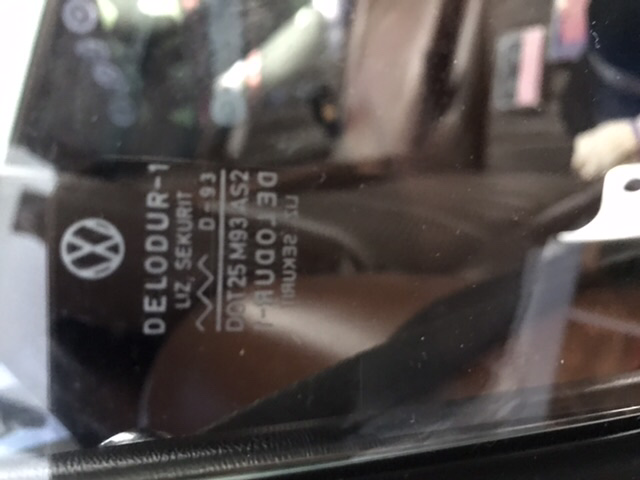 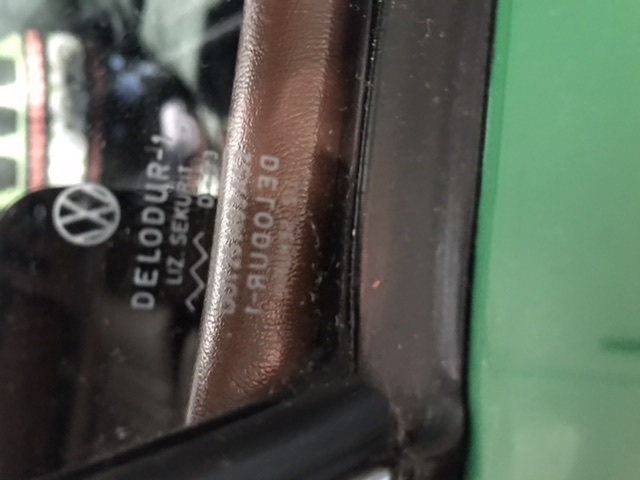 Do, why would/should windshield be different? (IMG:style_emoticons/default/wacko.gif) Original owner, so not replaced to my knowledge. |
| wonkipop |
 Jan 9 2023, 03:08 PM Jan 9 2023, 03:08 PM
Post
#58
|
|
Advanced Member     Group: Members Posts: 4,666 Joined: 6-May 20 From: north antarctica Member No.: 24,231 Region Association: NineFourteenerVille 
|
@wonkipop @jeffbowlsby Ok, here’s mine. Yet again, different. 1974 1.8 with Apperance Group. Chassis from nov 73; build date May 74. The windshield emblem in lower right by vin plate but very faint so not able to photograph. Has: Flag-like Logo Made In Western Germany SIGLA Squiggle wave D-79 DOT 25 M91 Yet the door glass and corner triangle glass look just like the others:   Do, why would/should windshield be different? (IMG:style_emoticons/default/wacko.gif) Original owner, so not replaced to my knowledge. i was waiting for you to chime in @StarBear . (IMG:style_emoticons/default/biggrin.gif) (IMG:style_emoticons/default/biggrin.gif) (IMG:style_emoticons/default/biggrin.gif) and upset the applecart. (IMG:style_emoticons/default/biggrin.gif) thats very interesting about the sigla screen. dunno. maybe there is a variety of screens that went in at the factory after all. be interesting to hear what @L-Jet914 has in his car as i believe it might be pretty original too. though windscreens are always hard ones as many got replaced. but for sure you would know the history of yours. about the only thing that could happen might be screen damaged during shipping out from germany back in time and screen replaced before delivery. but thats just a guess. either variety of screens at factory depending on time of build or replacement. who knows? PS - @StarBear judging from the side glass it looks like your car is "untinted" window package. have you got a window sticker or order form still in your documentation that says how the car came regarding options? |
| wonkipop |
 Jan 9 2023, 03:20 PM Jan 9 2023, 03:20 PM
Post
#59
|
|
Advanced Member     Group: Members Posts: 4,666 Joined: 6-May 20 From: north antarctica Member No.: 24,231 Region Association: NineFourteenerVille 
|
Heat absorbing glass has been around for an awfully long time. PPG came out with Solex (now called Solexia by the new owners) back in the 1930s. Nothing really exotic about it, the glass has a greenish tinge or tint. It basically adds an impurity of iron and or chromium ions that does not transmit IR but absorbs it. I think it also has higher UV absorption too. The car still gets hot inside. excellent bit of info @vitamin914 . i'd say thats pretty much all a 914 "tinted" screen is. the DELODUR 1 on the side windows looks like its what we call low iron or ultra clear glass in construction circles. DELODUR 1 is probably toughened plate or sheet versus DELODUR F being toughened float. the glass would have come out of two different processes or production lines. the float glass they were using appears to have been naturally greener (darker) due to its composition. they just amped it up with the outer layer of the windscreen lamination for the so called tinted screen with extra ingredients in the glass mix as you say. (IMG:style_emoticons/default/beerchug.gif) i'll be interested to see if porsche museum gets back to me. the curator did last time i wrote. so long as you are very specific about what you want and it won't take too much time he wanders over with his iphone, takes a snap and emails it directly. @wonkipop I hope the curator sends something useful too. You would expect, if it is a good example, the car would be a rather unmolested original "production" vehicle. Of course there is always the danger that the glass was experimental i.e. not intended for public use. We had a research group that made all sorts of one-offs and specials. They even made huge bubble canopies with chemically tempered glass (like smartphone screens) for concept cars to show off capabilities. its a good condition base model euro spec 74 1.8 the factory has. standard off production line. it belonged to Horst Marchart the former development chief at Porsche - he worked on the development of the boxster. the car was his company car or personal car when he first worked at porsche as a young engineer. he donated it to the collection. its hard to know to what degree it might have been "restored" or freshened up for the museum - but certainly the engine was in completely unmolested state. ironically besides the two monster 914/8s they had it was for many years the only other 914 in the collection. these days they have a 6 as well but i believe it was bought from a 914/6 owner in the USA who had restored it beautifully. they didn't seem to keep 914s. although the same could be said of early 911s etc as well. they more or less sold everything they built including a lot of prototypes. (IMG:style_emoticons/default/biggrin.gif) |
| StarBear |
 Jan 9 2023, 03:52 PM Jan 9 2023, 03:52 PM
Post
#60
|
|
Advanced Member     Group: Members Posts: 2,071 Joined: 2-September 09 From: NJ Member No.: 10,753 Region Association: North East States 
|
@wonkipop @jeffbowlsby Ok, here’s mine. Yet again, different. 1974 1.8 with Apperance Group. Chassis from nov 73; build date May 74. The windshield emblem in lower right by vin plate but very faint so not able to photograph. Has: Flag-like Logo Made In Western Germany SIGLA Squiggle wave D-79 DOT 25 M91 Yet the door glass and corner triangle glass look just like the others:   Do, why would/should windshield be different? (IMG:style_emoticons/default/wacko.gif) Original owner, so not replaced to my knowledge. i was waiting for you to chime in @StarBear . (IMG:style_emoticons/default/biggrin.gif) (IMG:style_emoticons/default/biggrin.gif) (IMG:style_emoticons/default/biggrin.gif) and upset the applecart. (IMG:style_emoticons/default/biggrin.gif) thats very interesting about the sigla screen. dunno. maybe there is a variety of screens that went in at the factory after all. be interesting to hear what @L-Jet914 has in his car as i believe it might be pretty original too. though windscreens are always hard ones as many got replaced. but for sure you would know the history of yours. about the only thing that could happen might be screen damaged during shipping out from germany back in time and screen replaced before delivery. but thats just a guess. either variety of screens at factory depending on time of build or replacement. who knows? PS - @StarBear judging from the side glass it looks like your car is "untinted" window package. have you got a window sticker or order form still in your documentation that says how the car came regarding options? Yep! Tinted windshield. See below: 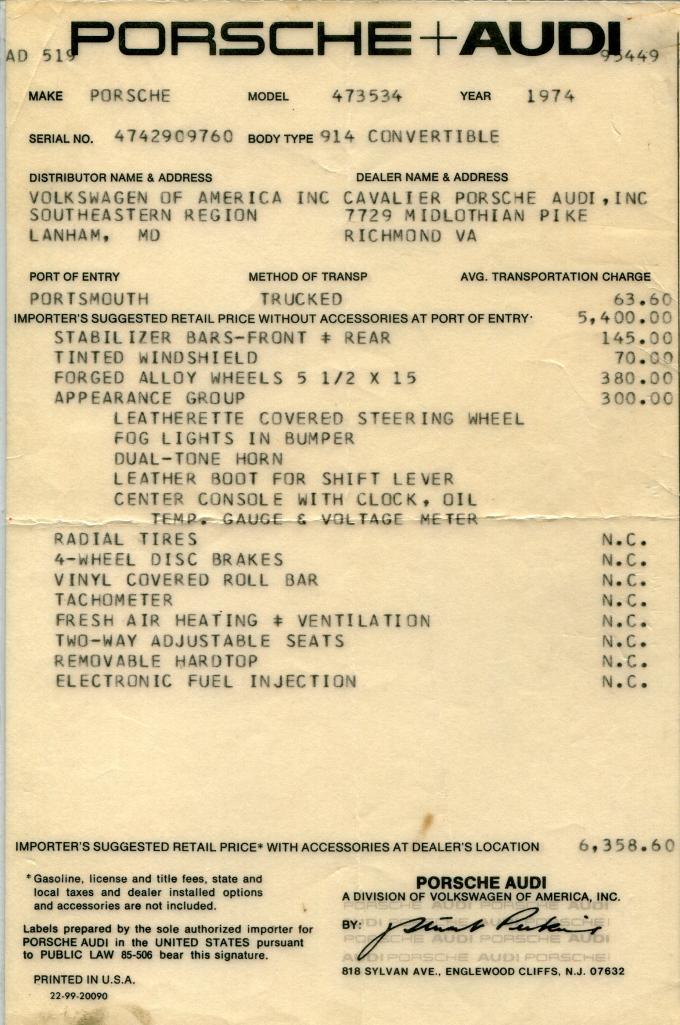 |
  |
1 User(s) are reading this topic (1 Guests and 0 Anonymous Users)
0 Members:

|
Lo-Fi Version | Time is now: 24th November 2024 - 10:27 AM |
Invision Power Board
v9.1.4 © 2024 IPS, Inc.








